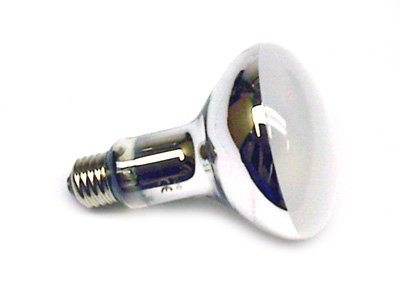Mercury vapor lamps can turn any commercial environment into an elegant, color laced space. These bulbs are extremely efficient and the phosphor that coats the bulb’s exterior is perfect for color rendering.
 Mercury vapor lamps
Mercury vapor lamps offer better color rendition than either high or low-pressure sodium lamps. The long lifespan of mercury vapor lighting fixtures has made them a popular choice, especially in the commercial sector. These lights belong to a group of illumination fixtures called HID or high-intensity discharge. Illumination devices in this category produce an intense light source, which is useful in some environments.
LED Spot has a unique selection of mercury vapor lamps and bulbs. Our vast online selection gives customers a wide array of quality lighting fixtures, including mercury vapor, from some of the best manufacturers in the illumination industry. We have a professional staff that can assist you with your selection and give you great advice on how to go about a superior lighting design. These experts are available to answer any question you may have about lighting techniques or how to improve on your design theme. It does not matter whether you need a functional light fixture or one used for aesthetic purposes, LED Spot has the right choice to suit your requirements.
Mercury vapor lamps fall into the category of negative resistance illumination fixtures. Most of these fixtures usually require some type of ballast in order to perform at a high level.
Replacement ballasts are often used with mercury vapor lamps because they tend to be more energy efficient, giving your bulb a longer lifespan in the long run. Replacement ballasts are important because the lamp may take on too much excessive current, resulting in overload and shutdown. LED Spot has a great selection of replacement ballasts for your convenience.
When you initially turn on a mercury vapor lamp, you will notice that the bulb emits a dark blue glow. This results from only a small amount of mercury being ionized and because of low gas pressure. On the color spectrum, light waves would fall within the ultra-violet range during this initial startup. Once the main arc strikes and the gas begins to increase in temperature, along with pressure, light starts to shift into the visible range and appears more white to the naked eye. It should be noted that even at full luminosity, the light produced by a mercury vapor bulb is not continuous on the visible end of the spectrum. Viewers who are looking at a non-phosphor bulb will notice a bluish light instead of the traditional white light we are so accustomed to seeing.
In order to adjust for this bluish color, manufacturers do construct mercury vapor lamps, which have a phosphor coating on the outer bulb. This coating converts a large percentage of UV emissions into red light. This helps to close the gap on the vacant red part of the electromagnetic spectrum associated with mercury vapor bulbs. People used to complain about the type of light these fixtures used to produce. Non-phosphor fixtures made people look like “bloodless zombies” because of the very low light levels at the red end of the electromagnetic spectrum. Most modern applications have phosphor within the bulb’s design, giving a more vibrant color to human skin under such applications.
All mercury vapor lamps produce ultraviolet radiation, which can be harmful to your body and your beautiful artwork. There are safety features, which can be purchased or built into the fixture in order to prevent these rays from escaping. A strong outer guard or lens is needed to protect the lamp’s outer bulb. There are also special
safety lamps, which will automatically burn out if the glass on the outer bulb has shattered. Ask one of LED Spot’s representatives about these safety requirements before going about your selection.
 Mercury vapor lamps offer better color rendition than either high or low-pressure sodium lamps. The long lifespan of mercury vapor lighting fixtures has made them a popular choice, especially in the commercial sector. These lights belong to a group of illumination fixtures called HID or high-intensity discharge. Illumination devices in this category produce an intense light source, which is useful in some environments.
Mercury vapor lamps offer better color rendition than either high or low-pressure sodium lamps. The long lifespan of mercury vapor lighting fixtures has made them a popular choice, especially in the commercial sector. These lights belong to a group of illumination fixtures called HID or high-intensity discharge. Illumination devices in this category produce an intense light source, which is useful in some environments.



